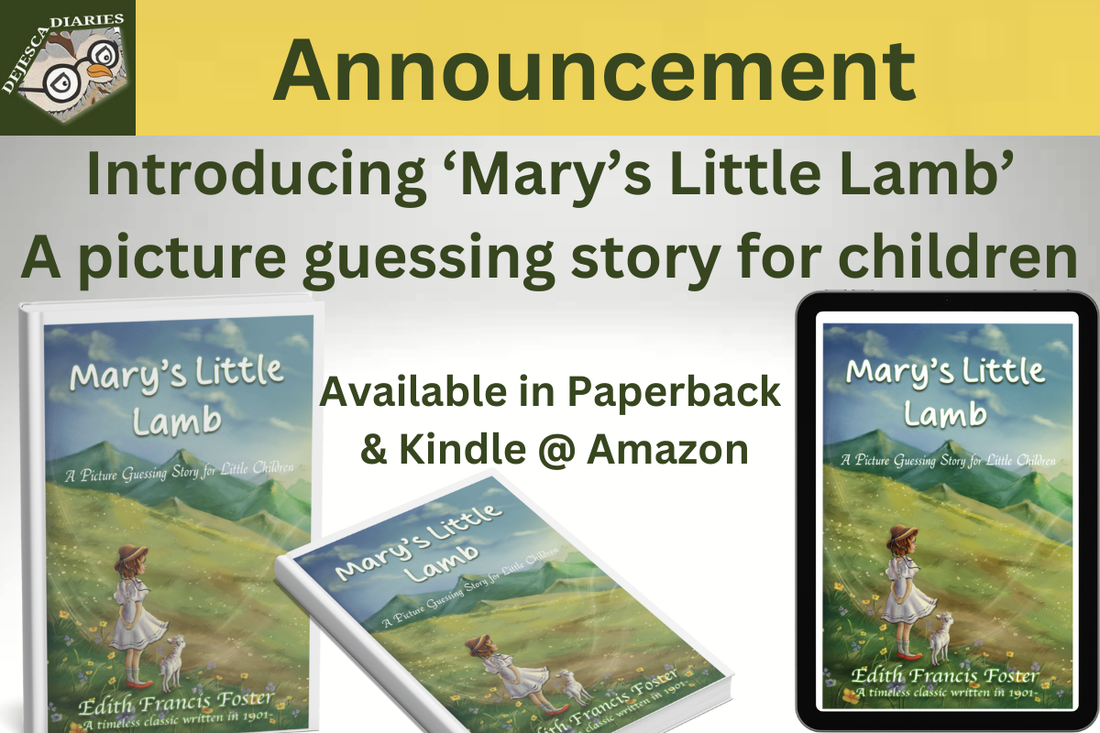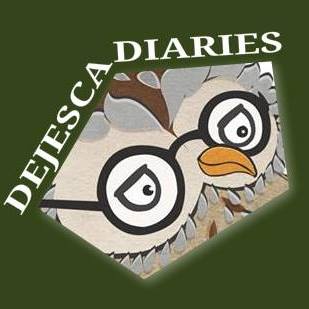
Exploring 'Mary's Little Lamb' and the Power of Visual Storytelling in Early Childhood Reading

In a world increasingly dominated by screens and technology, the importance of fostering a love for reading in young children cannot be overstated. This is particularly true when it comes to picture books, which play a vital role in early childhood literacy. At Dejesca Diaries, we are thrilled to announce the launch of a beloved classic: ‘Mary's Little Lamb - A Picture Guessing Story for Little Children’, written by Edith Francis Foster and originally published in the early 20th century. This charming book offers not only a delightful narrative but also an engaging way for children to connect with reading through visuals, making it an important addition to any young reader’s library.
The Story Behind 'Mary's Little Lamb'
‘Mary's Little Lamb’ is rooted in folklore and has been cherished by generations since its first publication in 1901/1903. The story—simple yet profound—explores the adventures of a girl named Mary and her little lamb that follows her everywhere she goes. With its rhythmic prose and delightful illustrations, the book captivates children's imaginations while laying the groundwork for foundational reading skills.
As we step into this new era with our re-launch, it’s crucial to recognize the timeless themes of friendship, loyalty, and the innocent joys of childhood that this narrative encapsulates. These themes are as relevant today as they were over a century ago, making the book an enduring classic.
The Importance of Picture Books in Early Literacy
1. Enhancing Comprehension Through Visuals
Picture books like ‘Mary's Little Lamb’ are instrumental in aiding comprehension for young readers. The illustrations allow children to visualize the story, helping them grasp narratives without relying solely on text. Research shows that when children engage with images alongside words, they are better able to form connections and understand the story's context.
As children explore the book’s vibrant illustrations, they can guess what happens next in the story, fostering engagement and participation. This dual-code approach—reading words and interpreting pictures—creates a richer experience that enhances memory retention and comprehension skills.
2. Encouraging Predictive Skills
One of the most exciting aspects of ‘Mary's Little Lamb’ is its interactive nature, inviting children to guess what will happen next. This encourages predictive skills, which are crucial in the reading process. Before they can read independently, children learn to predict outcomes based on visual clues, helping to build their cognitive abilities.
As they flip through the pages, young readers become active participants in the storytelling process. They learn to observe, analyze, and predict, skills that are essential not just for reading, but for critical thinking in general.
3. Building Vocabulary
Picture books are also beneficial for vocabulary development. Each page presents opportunities for children to encounter new words, particularly when images illustrate the text. In ‘Mary's Little Lamb’, children can see the lamb, Mary, and other characters in action, which helps them connect words to visuals, enabling them to decode meaning more effectively.
Parents and educators can further enhance this experience by discussing the images and introducing new vocabulary. Questions like “What do you think the lamb is feeling?” or “What do you think Mary will do next?” not only encourage richer dialogue but also promote language development.
4. Fostering Imagination and Creativity
The combination of engaging visuals and a captivating narrative sparks children’s imaginations. As they visualize the scenes depicted in the illustrations, they can create their own mental images and stories, fostering creativity. This imaginative play is critical in developing a child's cognitive abilities, enabling them to think outside the box and develop problem-solving skills.
Furthermore, as they ask questions about the story, children learn to express their ideas and thoughts, enhancing their verbal expression. By encouraging them to create alternate endings or imagine different scenarios for Mary and her lamb, we nurture their creative thinking and storytelling skills.
5. Encouraging Emotional Connection
Through ‘Mary's Little Lamb’, children can relate to the emotions embodied in the narrative and illustrations. The themes of companionship and adventure resonate with young readers, prompting them to empathize with the characters. Emotional connections form a crucial part of effective storytelling, as they help children understand their feelings and those of others.
This emotional engagement not only enhances comprehension but also lays the groundwork for social-emotional learning. Understanding stories through the perspective of characters aids in developing empathy, compassion, and communication skills – traits that are invaluable in their interactions with peers and adults.
Conclusion: A Timeless Treasure for the Next Generation
As we celebrate the launch of ‘Mary's Little Lamb - A Picture Guessing Story for Little Children’, we invite you and your little ones to rediscover its charm and wisdom. This classic book provides much more than a delightful tale—it offers crucial development opportunities for young readers, making reading an enjoyable and enriching experience.
The combination of inviting illustrations and a relatable narrative will not only enhance literacy skills but will also inspire a lifelong love for books. We believe that ‘Mary's Little Lamb’ will become a cherished addition to family libraries, loved by children and parents alike.

